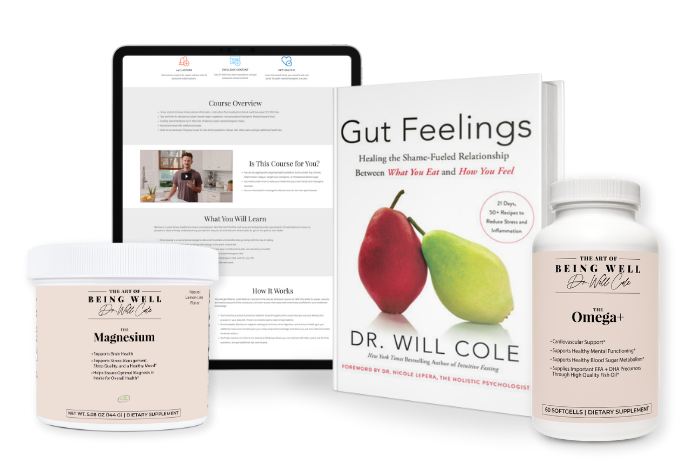What Is Tallow? Should You Use It?

Tallow is an often-overlooked, yet incredibly versatile and nutritious animal fat that's been a staple in traditional cooking for centuries. Full of health-fueling fat, it should be a staple in anyone’s health-focused kitchen.
What Is Tallow?
Tallow is a type of animal fat that's derived from suet, which is the fatty part of a cow or other ruminant animal. It's rendered, meaning it's been melted down from its solid form to create a liquid or semi-solid substance. Tallow can be used in cooking, skincare, candle-making, and even as a biofuel!
Tallow is typically sourced from beef or mutton suet, although it can also be made from other animals like pigs or goats. The suet is usually taken from the deposits around the kidneys, loins, or other areas of the animal's body, which makes it great from the perspective of trying to eat the entire animal when mindfully consuming animal products.
Health Benefits
Tallow offers a treasure trove of health benefits, both internally and topically.
Internal Health Benefits:
Topical Health Benefits:
Important Note: When using tallow, it's of the utmost importance to choose high-quality, grass-fed, and pasture-raised sources to ensure optimal nutritional benefits. For topical use, always perform a patch test to ensure you're not allergic to tallow or any other ingredients in your skincare products.
How To Use It In The Kitchen
Using tallow in your cooking and baking is a game-changer for any health-focused home cook. Its rich, buttery flavor and high smoke point make it an ideal cooking fat for a variety of dishes and for novice cooks who may find it difficult to keep oils below their smoke point.
Cooking Methods:
- Sauteing: Use tallow to sauté vegetables, meats, and seafood for a rich, savory flavor.
- Roasting: Rub tallow on meats or vegetables before roasting for a moist, flavorful crust.
- Baking: Substitute tallow for butter oil, or other fats in baked goods, such as pie crusts, biscuits, or cakes.
- Grilling: Brush tallow on meats or vegetables before grilling for a smoky, caramelized flavor.
Tips and Tricks:
- Start with small amounts: Tallow can be quite rich, so start with small amounts and adjust to taste.
- Mix with other fats: Blend tallow with other fats, like olive oil or coconut oil, for a unique flavor profile.
- Use it as a finishing oil: Drizzle tallow over dishes just before serving to add a burst of flavor and aroma.
- Make tallow-based sauces: Whisk tallow with vinegar, mustard, or herbs to create delicious sauces for meats or vegetables.
- Store it properly: Keep tallow in an airtight container in the fridge or freezer to prevent spoilage.
Recipe Ideas:
- Roasted Vegetables: Toss vegetables with tallow, salt, and herbs, then roast in the oven until tender and caramelized.
- Tallow-Based Gravy: Whisk tallow with flour and broth to create a rich, savory gravy.
- Tallow-Infused Finishing Oil: Mix tallow with olive oil and herbs, then use as a finishing oil for dishes.
- Creamy Tallow Potato Soup: Use tallow to make a rich, creamy potato soup. Simply sauté onions and garlic in tallow, then add diced potatoes, broth, and cream. Blend until smooth, then serve with a sprinkle of chives.
- Tallow-Based Chicken Noodle Soup: Use tallow to make a rich, savory chicken noodle soup. Simply sauté onions and garlic in tallow, then add diced chicken, noodles, and broth. Simmer until the chicken is cooked through, then serve with a sprinkle of herbs.
- Tallow Pie Crust: Use tallow instead of butter or shortening to make a flaky, tender pie crust. Simply mix tallow with flour, salt, and water, then roll out and fill with your favorite filling.
- Tallow Biscuits: Substitute tallow for butter or lard in your favorite biscuit recipe. The tallow will add a rich, buttery flavor and a tender texture.
Bonus: 2 Non-Culinary Ways You Can Use Tallow
Use It To Make Natural Candles
To make candles using tallow, melt it with other waxes like beeswax or paraffin, then add a wick and any desired colorants or fragrances. The tallow will add a unique, rustic texture and a warm, natural glow to the candle. Pour the mixture into a mold and allow it to cool and harden, then trim the wick and enjoy your handmade tallow candle.
Add It Into Your Skin + Hair Care Routine
Adding tallow to your hair and skin care routine can be a great way to nourish and moisturize your skin and locks. Here are some ways to incorporate tallow into your routine:
Skin Care:
- Moisturizer: Use tallow as a moisturizer by applying a small amount to your skin after bathing or showering. It's especially beneficial for dry, sensitive, or eczema-prone skin.
- Face Cream: Mix tallow with other natural ingredients like coconut oil, shea butter, and essential oils to create a nourishing face cream. Bonus points if you use it for your daily facial massage or gua sha.
- Body Butter: Whip tallow with other natural ingredients like coconut oil, shea butter, and essential oils to create a rich, moisturizing body butter.
- Lip Balm: Use tallow to make a nourishing lip balm by mixing it with beeswax, coconut oil, and essential oils.
Hair Care:
- Hair Mask: Apply tallow to the ends of your hair as a hair mask to nourish and moisturize dry, damaged locks.
- Leave-In Conditioner/Serum: Mix tallow with other natural ingredients like coconut oil, argan oil, and essential oils to create a leave-in conditioner that nourishes and moisturizes your hair.
Food’s Role In Your Journey To Healing
When we nourish our bodies with whole, nutrient-dense and delicious foods like tallow, we're not just satisfying our hunger; we're also supporting our immune systems, calming inflammation, and promoting optimal health.
Interested in Learning More?
But tallow alone is unlikely to solve your health issues. If you’re interested in learning more about how a nourishing, balanced diet can help you reverse disease and chronic symptoms, schedule a consultation with someone from our functional health telemedicine team today.
No, tallow and lard are not the same, although both are animal fats. Tallow comes from beef or mutton fat, while lard comes from pork fat, resulting in distinct flavors, textures, and uses. They are often used in different cooking and crafting applications due to their unique properties.
Tallow and olive oil have different nutritional profiles, making them suitable for different uses. Tallow is rich in fat-soluble vitamins (A, D, E, and K) and conjugated linoleic acid (CLA), while olive oil is high in monounsaturated fats and antioxidants.
Yes, tallow is a fantastic choice for high-heat cooking due to its high smoke point (around 420°F/220°C).
Yes, tallow can be used as a substitute for butter in baking, but keep in mind that it has a distinct flavor and texture. Tallow can add a rich, savory flavor and tenderness to baked goods, but it may not provide the same sweetness or flakiness as butter. Use it in recipes where a beefy or savory flavor is desired, and adjust ratios and ingredients accordingly.
View More At Our Store
Purchase personally curated supplements
and Dr. Will Cole’s books!

The information on this website has not been evaluated by the Food & Drug Administration or any other medical body. We do not aim to diagnose, treat, cure or prevent any illness or disease. Information is shared for educational purposes only. You must consult your doctor before acting on any content on this website, especially if you are pregnant, nursing, taking medication, or have a medical condition.
Our content may include products that have been independently chosen and recommended by Dr. Will Cole and our editors. If you purchase something mentioned in this article, we may earn a small commission.

BY DR. WILL COLE
Dr. Will Cole, DNM, IFMCP, DC is a leading functional medicine expert who consults people around the globe, starting one of the first functional medicine telehealth centers in the world. Named one of the top 50 functional and integrative doctors in the nation, Dr. Will Cole provides a functional medicine approach for thyroid issues, autoimmune conditions, hormonal imbalances, digestive disorders, and brain problems. He is also the host of the popular The Art of Being Well podcast and the New York Times bestselling author of Intuitive Fasting, Ketotarian, Gut Feelings, and The Inflammation Spectrum.

Gut Feelings
Healing The Shame-Fueled Relationship
Between What You Eat And How You Feel
